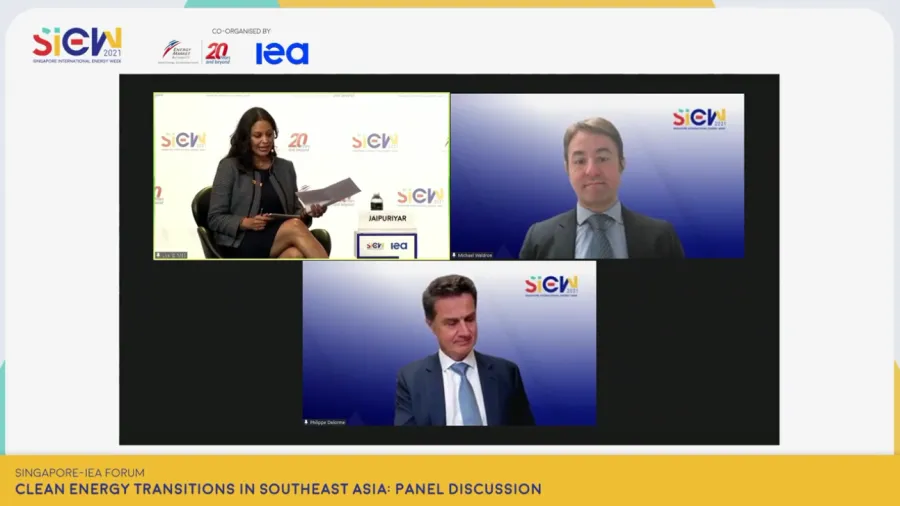
Emerging and developing Asia needs to increase RE contributions by 50%
Energy demand is expected to grow by 3% annually over the next two decades, the IEA projected.
In today’s policy settings, renewables in 2040 are expected to meet around 30% of the demand growth; but in the case of emerging and developing countries in Asia, renewables will need to be increased by more than 50% to meet the same goals, said International Energy Agency (IEA) Head of Energy Supply and Investment Outlooks Michael Waldron.
“This would need to be combined with dramatic efforts to improve the energy intensity in terms of the use of energy to slow the energy demand growth,” he said.
At present, energy demand will likely grow rapidly in emerging and developing countries in Asia. In particular, energy demand could rise by 3% annually over the next two decades, whilst electricity demand could grow at a faster rate of 4% per year over the same period.
This will come as Asia continues to industrialise, urbanise, and electrify, Waldron said, citing Vietnam and India, where governments have put in place policies that have expanded access to energy and increased uptake of energy efficient appliances, respectively.
On top of this, he said the growth will also be driven by a doubled demand for cooling households with air conditioners in Southeast Asia in the next 20 years.
“In order to keep the door open for the world to meet its net-zero emissions goals, this progress would need to be even stronger. This means a massive acceleration in energy in order to help curb oil-use for transport, to narrow gas demand to areas where it helps to bring down emissions,” he said.
“And most important of all, to slash coal-use for electricity generation, which is a major source of emissions in today's energy economy.”
Waldron was speaking at the 2021 Singapore International Energy Week during which the IEA officially launched its World Energy Outlook (WEO) report for 2021 in Southeast Asia. The report found that climate ambitions have risen to new heights with 120 countries that account for more than half of global emissions, announcing new policies in the last year.
Turning pledges into action
“What is absolutely clear is that climate ambitions have never been higher, but the energy and emissions data does not yet match the rhetoric,” IEA Deputy Executive Director Mary Burce Warlick, said.
If implemented, the pledges could result in a “substantial change” in the current emissions trajectory, but would still leave a gap to limit temperature increase to 1.5 degrees Celsius. Warlick said the new pledges only closes 20% of the gap between the current trajectory and the net-zero target. This leaves an “ambition gap'' of almost 14 gigatonnes (Gt) of greenhouse gases in 2030. This is also nearly equivalent to the emissions of the Organisation for Economic Co-operation and Development states.

Further, the pledges will only close 40% of the gap by 2050, which as Warlick said, could pose risks of hitting “irreversible climate tipping points,” such as sea level rise and acidification. She also reiterated that to attain the Paris agreement commitment of limiting warming to 1.5 degrees, net-zero emissions should be reached by 2050.
“Without global concrete commitments now to reach net zero by 2050, we will lock in emissions and we will not make sufficient progress in innovation and clean energy technologies to get us there,” she said.
Despite this, Warlick said there are policies and cost-effective technologies that could help narrow the ambition gap by almost half in 2030. The IEA estimated that up to 60% of the gap could be closed through cost-effective expansion of wind, solar, and hydropower as well as the lifetime extension for nuclear power facilities already online. The WEO found this could reduce the need for coal by 350 gigawatts (GW) and pave the way for the retirement of an additional 150 GW of coal without threatening either electricity security or prices.
Warlick added that reducing methane emissions from fossil fuel operations could lessen about 1.7 Gt of CO2 emissions through measures that are technically feasible and well known. On top of this, another 1 Gt could be cut from emissions through end-use efficiency that can be achieved through stronger fuel economy standards, particularly in trucks, appliances efficiency, and industrial energy efficiency.
Others may come from combined energy demand reductions in investments in technologies such as hydrogen, advanced batteries, carbon capture, utilisation and storage or CCUS, and advanced biofuels.
“Enhancing the near-term deployment of these known technologies can spur innovation and accelerate the deployment of complementary enabling infrastructure and this, in turn, can allow these technologies to play a much larger role in the longer term after 2030,” Warlick said.
The path to a net-zero world
The IEA projected that driving the world towards the net-zero pathway would incur an annual cost of US$4t by 2030 in terms of investments in clean energy projects and infrastructure. Warlick said investment in clean energy was resilient in 2020 and is expected to see a slight uptick this year. However, whilst that is the case, she said the cost of investment needs to “more than triple.”
“The bottom line is that, substantially, more clean energy investment is essential to maintain reliable energy supply, if and whilst oil and gas investment remains stable, or declines along with demand,” she said.
The IEA also estimated that the cumulative market opportunity for manufacturers of wind turbines, solar panels, lithium-ion batteries, electrolyser fuel cells could be worth US$27t, should the net-zero target be attained by 2050. The report noted that in 2050, these five equipment markets alone would be larger than the oil industry today.
This creates major prospects for companies, Warlick said, citing for instance low carbon gases as an opening for new fuel suppliers.
“We estimate that almost 30 million new clean energy jobs will be created in our net-zero scenario by 2030, far more than the jobs lost in declining sectors,” Warlick said.



















 Advertise
Advertise






